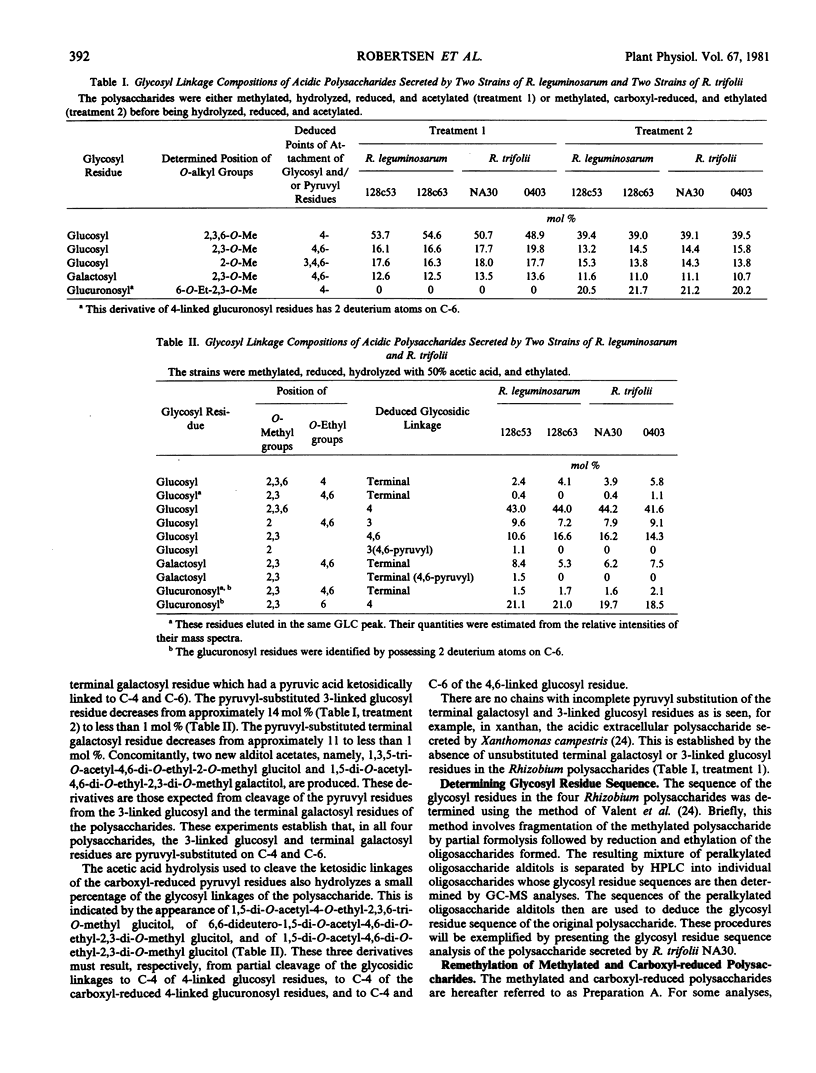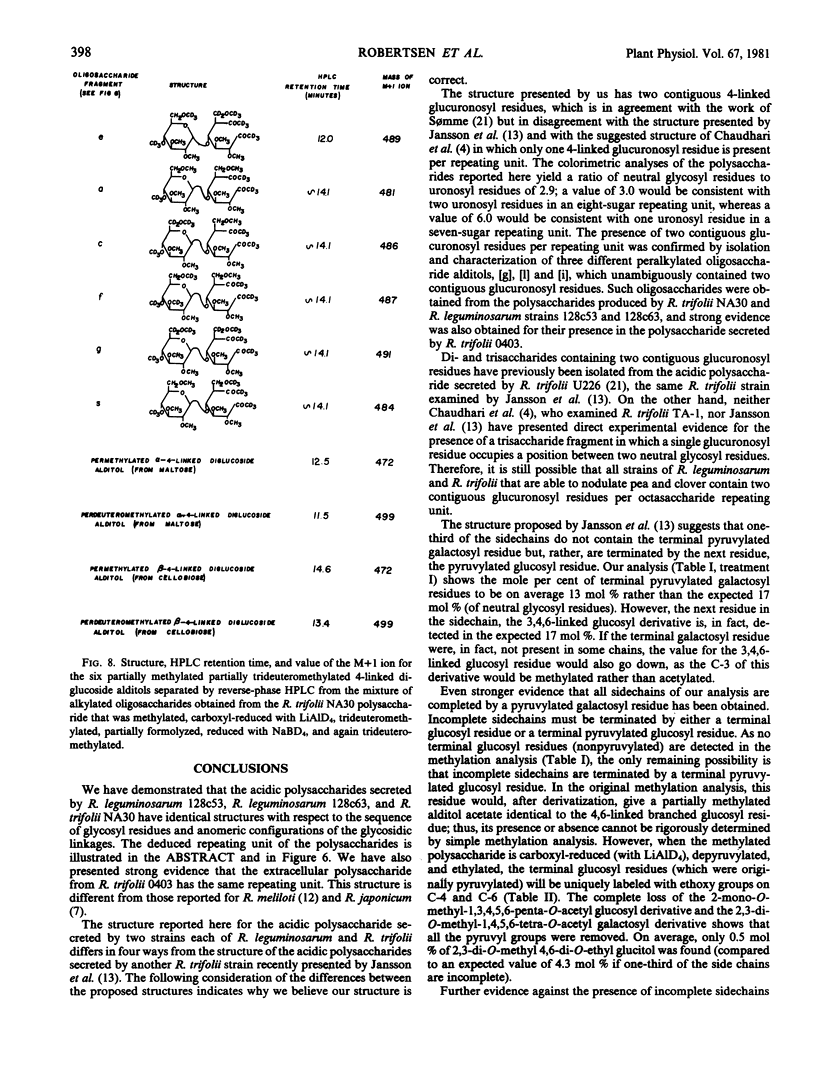Abstract
The sequence of the glycosyl residues and the anomeric configurations of the glycosyl linkages of the acidic polysaccharides secreted by Rhizobium leguminosarum 128c53, Rhizobium leguminosarum 128c63, Rhizobium trifolii NA30, and Rhizobium trifolii 0403 have been determined. All four polysaccharides were found to have the following glycosyl repeating-unit structure, where galactosyl is Gal, glucosyl is Glc, glucuronosyl is GlcA, and pyruvyl is Pyr: [Formula: see text] Each of the glycosyl residues of these polysaccharides was determined to be in the d configuration and in the pyranose ring form. These results add support to the proposal that R. leguminosarum and R. trifolii have a particularly close genetic relationship. The significance of these results with regard to the possible function of these polysaccharides in the nodulation process is discussed.
Full text
PDF











Selected References
These references are in PubMed. This may not be the complete list of references from this article.
- Blumenkrantz N., Asboe-Hansen G. New method for quantitative determination of uronic acids. Anal Biochem. 1973 Aug;54(2):484–489. doi: 10.1016/0003-2697(73)90377-1. [DOI] [PubMed] [Google Scholar]
- Carlson R. W., Sanders R. E., Napoli C., Albersheim P. Host-Symbiont Interactions: III. Purification and Partial Characterization of Rhizobium Lipopolysaccharides. Plant Physiol. 1978 Dec;62(6):912–917. doi: 10.1104/pp.62.6.912. [DOI] [PMC free article] [PubMed] [Google Scholar]
- Chaudhari A. S., Bishop C. T., Dudman W. F. Structural studies on the specific capsular polysaccharide from Rhizobium trifolii, TA-1. Carbohydr Res. 1973 Jun;28(2):221–231. doi: 10.1016/s0008-6215(00)82778-0. [DOI] [PubMed] [Google Scholar]
- Jansson P. E., Kenne L., Lindberg B., Ljunggren H., Lönngren J., Rudén U., Svensson S. Demonstration of an octasaccharide repeating unit in the extracellular polysaccharide of Rhizobium meliloti by sequential degradation. J Am Chem Soc. 1977 May 25;99(11):3812–3815. doi: 10.1021/ja00453a049. [DOI] [PubMed] [Google Scholar]
- Kleczkowska J., Nutman P. S., Bond G. Note on the Ability of Certain Strains of Rhizobi from Peas and Clover to Infect Each Other's Host Plants. J Bacteriol. 1944 Dec;48(6):673–675. doi: 10.1128/jb.48.6.673-675.1944. [DOI] [PMC free article] [PubMed] [Google Scholar]
- Napoli C., Albersheim P. Rhizobium leguminosarum mutants incapable of normal extracellular polysaccharide production. J Bacteriol. 1980 Mar;141(3):1454–1456. doi: 10.1128/jb.141.3.1454-1456.1980. [DOI] [PMC free article] [PubMed] [Google Scholar]
- de la Roche A. I. Increase in linolenic Acid is not a prerequisite for development of freezing tolerance in wheat. Plant Physiol. 1979 Jan;63(1):5–8. doi: 10.1104/pp.63.1.5. [DOI] [PMC free article] [PubMed] [Google Scholar]


